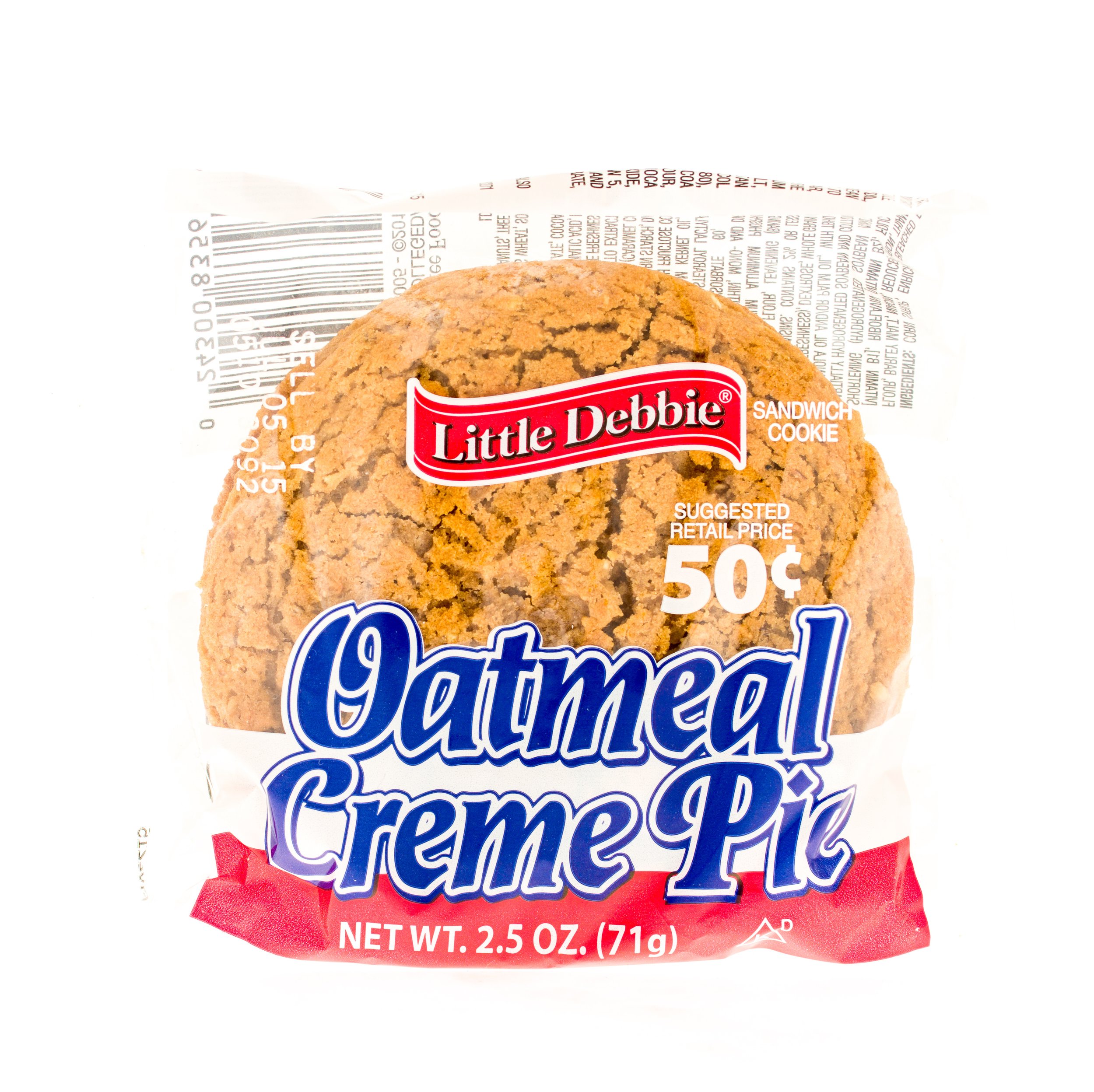ACUPUNCTURE & WELLNESS BLOG
Explore the intersection of ancient medicine and modern health through practical insights and easy-to-follow tips
EXPLORE MORE BELOW
Understanding Long Vax: A Growing Health Crisis
The COVID-19 pandemic has left a significant mark on global health, with lingering effects that go beyond the acute illness caused by the virus. Among these long-term impacts are conditions like Long Covid, which is now widely recognized and being studied. However, there is another, often overlooked condition that shares striking similarities with Long Covid: “Long Vax”. This condition, which has emerged in the wake of mRNA vaccinations, mirrors many symptoms of Long Covid but may have unique characteristics and requires distinct attention.
The COVID-19 pandemic has left a significant mark on global health, with lingering effects that go beyond the acute illness caused by the virus. Among these long-term impacts are conditions like Long Covid, which is now widely recognized and being studied. However, there is another, often overlooked condition that shares striking similarities with Long Covid: “Long Vax”. This condition, which has emerged in the wake of mRNA vaccinations, mirrors many symptoms of Long Covid but may have unique characteristics and requires distinct attention.
The Origins of Long Vax
Long Covid, despite being a relatively new term, is not a new disease. It closely resembles a decades-old condition known as myalgic encephalitis/chronic fatigue syndrome (ME/CFS). The hallmark symptoms—fatigue, post-exertional malaise (PEM), and cognitive deficits or "brain fog"—are present in almost every patient suffering from Long Covid. But for many, particularly those who developed symptoms shortly after receiving an mRNA vaccine, these symptoms might actually signal Long Vax.
Long Vax, as it has come to be called, initially presented itself in patients who experienced clusters of symptoms within minutes, hours, or days following mRNA vaccination. Although some of these patients also had a history of COVID-19 infection, the onset of their chronic symptoms more frequently followed vaccination rather than the infection itself. Over time, it became clear that Long Vax, while similar to Long Covid, often results in more severe symptoms and includes additional issues such as small fiber neuropathy and dysautonomia.
The Overlap and Distinctions Between Long Vax and Long Covid
Differentiating between Long Vax and Long Covid is generally straightforward, based on the timing of symptom onset relative to the triggering event—whether it be a COVID-19 infection or mRNA vaccination. While the treatment approaches for both conditions have been largely similar, there is a belief that there may be crucial differences in how Long Vax should be treated due to the unique factors associated with mRNA vaccines. These include ongoing spike protein production, the widespread distribution of mRNA and spike proteins throughout the body, the inflammatory effects of lipid nanoparticles, and potential long-term consequences of DNA plasmid contaminants.
The Response of the Medical Community
Despite the significant number of Long Vax cases—70% of one specialist's practice is now focused on Long Vax patients—the condition has not received the recognition it deserves. Most medical institutions have been slow to acknowledge the role of mRNA vaccines in causing this syndrome, focusing instead on Long Covid. This oversight has led to inadequate care for many Long Vax patients, who often encounter dismissive or even hostile responses from healthcare providers when they suggest that their symptoms are linked to vaccination.
The reluctance to recognize vaccine-induced injuries is a form of medical gaslighting—a well-documented phenomenon where medical professionals fail to acknowledge the harm caused by their own treatments. This has left many patients feeling abandoned by the healthcare system, further compounding their suffering.
The Need for Recognition and Research
It is crucial that both Long Covid and Long Vax are recognized as distinct yet related conditions. The unique characteristics of Long Vax, particularly those stemming from the mRNA vaccines, necessitate specific research and tailored treatment approaches. Ignoring the contribution of mRNA vaccines to this growing health crisis not only fails those suffering from Long Vax but also hinders the understanding of how to effectively treat these complex syndromes.
After more than two years of advocating for recognition of Long Vax, there is finally some progress. Recently, an Op-Ed by Dr. Paul Marik and Dr. Pierre Kory was published recently in a major media outlet, drawing attention to this critical issue. While this is a step in the right direction, much more needs to be done to ensure that the millions suffering from Long Vax receive the care and attention they desperately need.
Conclusion
The rise of Long Vax highlights the need for a broader understanding of the long-term effects of both COVID-19 and the vaccines developed to combat it. As the medical community continues to navigate the aftermath of the pandemic, it is essential to expand the focus to include all potential consequences of public health strategies. Only by acknowledging and addressing both Long Covid and Long Vax can effective care be provided to those who continue to suffer.
If you’d like to explore this topic further, this article by Dr. Pierre Kory is a great place to start.
ACUPUNCTURE | ROCHESTER, NY
The Hidden Dangers of Sugar and Its Impact on Your Health
Sugar is everywhere in our diets, often lurking in foods we don’t even consider sweet. While it's a well-known source of energy, not all sugars are created equal, and their impact on our health can be profound. Recent discussions among health experts have highlighted the complex relationship between sugar consumption and overall well-being, shedding light on why we should pay closer attention to the types of sugars we consume.
Sugar is everywhere in our diets, often lurking in foods we don’t even consider sweet. While it's a well-known source of energy, not all sugars are created equal, and their impact on our health can be profound. Recent discussions among health experts have highlighted the complex relationship between sugar consumption and overall well-being, shedding light on why we should pay closer attention to the types of sugars we consume.
The Misconception About Calories
There’s a common belief that “a calorie is just a calorie,” meaning that it doesn’t matter where your calories come from as long as you’re not exceeding your daily limit. However, this oversimplification ignores the fact that different types of calories can have very different effects on our bodies. For example, calories from high-fiber foods like almonds are not fully absorbed by the body, which means they don’t contribute as much to weight gain as calories from more processed foods.
Sugar: More Than Just Sweetness
One of the most concerning aspects of sugar, particularly fructose, is its addictive nature. Fructose, unlike glucose, is not necessary for energy production and instead directly stimulates the brain’s reward centers. This can lead to cravings and a cycle of consumption that’s hard to break. The addictive properties of fructose are a significant reason why it’s so difficult to cut down on sugar, even when we know it’s bad for us.
The Harmful Effects of Fructose
Beyond its addictive qualities, fructose can also interfere with the normal functioning of our cells. It inhibits critical enzymes in the mitochondria—the powerhouse of the cells—leading to impaired energy production and, over time, can contribute to metabolic disorders and decreased longevity. The long-term consumption of foods high in fructose, particularly ultra-processed foods, has been linked to various health problems, emphasizing the need to limit these foods in our diets.
The Role of Processed Foods
The food industry often adds sugar to products not just for taste but to increase their addictive potential, driving up consumption and, consequently, health issues. This manipulation of our food choices makes it difficult for many people to manage their sugar intake effectively. Addressing this issue requires more than just personal willpower; it calls for broader societal changes to how food is produced and marketed.
Steps to Reduce Sugar Intake
Improving health through better dietary choices is achievable with a few practical steps:
Limit or eliminate fructose from your diet to reduce inflammation and improve metabolic health.
Prioritize whole foods like vegetables, fruits, and high-fiber foods, which support a healthy gut microbiome.
Be vigilant about hidden sugars in processed foods by reading labels and choosing products with minimal or no added sugars.
Moving Forward
Understanding the complex effects of sugar on our health is crucial for making informed dietary choices. It’s not just about reducing calories but about choosing the right kinds of foods that support long-term health. By being mindful of the sugars in our diet and advocating for healthier food options, we can take meaningful steps toward better health and well-being.
To learn more, please check out this incredible podcast by Dr. Andrew Huberman and Dr. Robert Lustig:
ACUPUNCTURE | ROCHESTER, NY
Understanding Transitions in Classical Chinese Medicine
Transitions are an integral part of life, representing the continuous process of change that is fundamental to all existence. In Classical Chinese Medicine (CCM), this concept of transition is not just about physical changes but about a dynamic interplay of forces that drive transformation at every level of our being.
Transitions are an integral part of life, representing the continuous process of change that is fundamental to all existence. In Classical Chinese Medicine (CCM), this concept of transition is not just about physical changes but about a dynamic interplay of forces that drive transformation at every level of our being.
The Philosophical Roots: Yin, Yang, and the I Ching
At the heart of CCM's understanding of transitions lies the duality of yin and yang. These two opposing yet complementary forces are the drivers of all natural phenomena, including the transitions we experience in our bodies and the world around us. The I Ching (Yijing), a cornerstone of Chinese philosophy, explores this duality in depth, offering insights into how transitions are not merely random changes but guided processes that follow specific patterns.
The I Ching teaches us that all phenomena are in a constant state of flux, evolving from one condition to another. This is reflected in the cycles of nature, such as the transition from night to day, winter to spring, and from one state of health to another. Each of these transitions is governed by the principles of yin and yang, where one state reaches its peak and naturally gives way to the other.
The Nature of Transitions in CCM
In CCM, transitions are viewed as a continuous flow where old states are pushed out to make room for the new. This is not unlike the concept of phase transitions in modern physics, where a substance changes from one state to another, such as from solid to liquid. However, in CCM, these transitions are not limited to physical states; they encompass the energetic and physiological changes within the body, as well as the broader shifts in nature and time.
A critical aspect of managing these transitions is ensuring that they occur smoothly and harmoniously. For instance, the transition from winter (a yin phase) to spring (a yang phase) is more than just a seasonal change. It is an energetic shift that needs to be managed carefully to maintain health and vitality. If this transition is obstructed, it can lead to a state of imbalance, where the normal flow between yin and yang is disrupted, potentially leading to illness.
Practical Applications: Harmonizing Transitions
In practice, CCM emphasizes the importance of recognizing these critical points of change and taking steps to support the body's natural transitions. This might involve adjusting one's diet and lifestyle to align with the seasons, using specific herbal formulas to support the body's energy, or employing acupuncture to balance the flow of qi.
For example, during the transition from winter to spring, it might be beneficial to focus on cleansing and renewal, helping the body shed the sluggishness of winter and prepare for the active, expansive energy of spring. This could involve incorporating more fresh, green vegetables into the diet, engaging in gentle exercise to stimulate circulation, and using herbal remedies that support liver function, which is associated with spring in CCM.
Opportunity
Transitions are an inevitable and essential part of life. In Classical Chinese Medicine, they are seen as opportunities to harmonize with the natural flow of yin and yang, ensuring that we move smoothly from one state to the next. By understanding and respecting these transitions, we can maintain balance in our bodies and lives, aligning ourselves with the rhythms of nature and the wisdom of the ancients.
ACUPUNCTURE | ROCHESTER, NY
Unlocking Emotional Wellness Through Acupuncture
In today's fast-paced world, many of us struggle with stress, anxiety, and depression. While these emotional challenges are often seen as purely psychological, Classical Chinese medicine (CCM) offers a different perspective—one that views our emotional wellbeing as deeply connected to our physical health. Acupuncture, a key component of CCM, provides powerful tools to restore balance and harmony in both body and mind.
In today's fast-paced world, many of us struggle with stress, anxiety, and depression. While these emotional challenges are often seen as purely psychological, Classical Chinese medicine (CCM) offers a different perspective—one that views our emotional wellbeing as deeply connected to our physical health. Acupuncture, a key component of CCM, provides powerful tools to restore balance and harmony in both body and mind.
What Are Acupuncture Point Combinations (APCs)?
Think of an acupuncture point as a key that can unlock different effects in the body. When several points are combined, they work together like ingredients in a recipe, creating a synergistic effect that can address complex issues such as emotional turmoil. These combinations are carefully chosen to target the root cause of the problem, rather than just the symptoms.
For example, someone experiencing stress might have what CCM calls "Liver Qì Stagnation." This means that the energy (Qì) in their liver isn't flowing as smoothly as it should, leading to feelings of frustration or irritability. An APC designed to address this might include points that help move this stuck energy, calm the mind, and restore a sense of peace.
The Role of the Shén in Emotional Health
Central to CCM's understanding of emotional wellbeing is the concept of the Shén. The Shén is often translated as "spirit" or "mind," but it encompasses much more. It includes our consciousness, emotions, memory, and even our sleep patterns. The Shén is housed in the Heart, which in CCM is considered the "Emperor" of the body's organs. Just as an emperor's health determines the state of the kingdom, the health of the Heart and Shén influences our overall wellbeing.
When the Shén is disturbed, it can manifest as anxiety, depression, insomnia, or other emotional issues. Acupuncture can help by soothing the Shén and restoring balance to the Heart, often leading to profound improvements in emotional health.
Shén Scars: The Emotional Imprints That Shape Us
We all carry emotional scars—experiences that have left a lasting imprint on our spirit. In CCM, these are sometimes referred to as "Shén Scars." These aren't just negative experiences; they include any significant event that has shaped who we are today.
Acupuncture can be particularly effective in addressing these deep-rooted issues. By selecting specific acupuncture points that resonate with the organs and meridians (energy pathways) affected by these scars, it's possible to bring healing to the emotional wounds that continue to influence our lives.
For instance, if a person has endured a traumatic experience that continues to affect their daily life, acupuncture can help by calming the Shén and supporting the Heart and Pericardium—the organs most closely associated with emotional health in CCM.
Emotions as Both Cause and Effect
One of the fascinating aspects of CCM is its holistic view of emotions. Emotions are not just fleeting feelings; they can be both the cause of physical ailments and the result of them. For example, chronic stress can lead to digestive issues, and conversely, digestive imbalances can contribute to anxiety.
Moreover, CCM acknowledges that emotional patterns can be passed down through generations, much like physical traits. This means that some of the emotional challenges we face may have deeper, inherited roots. Acupuncture offers a way to address these patterns, helping to break the cycle and promote healing across generations.
Real-Life Example: Treating a Spiritless Shén
To illustrate how acupuncture can help, let's look at a real-life example. A young woman in her early twenties came to an acupuncturist with symptoms of depression and chronic fatigue. She lacked the energy to even prepare her meals and felt disconnected from life.
After assessing her condition, it was determined that her Spleen Qì (energy) and Liver Blood were deficient, leading to a "Spiritless Shén." The treatment focused on tonifying (strengthening) these areas while also using points that could lift and brighten the Shén. Over several sessions, the woman experienced a significant improvement in her energy levels and emotional outlook. She began to engage more in life, rediscovering her passion for cooking and finding joy in everyday activities.
A Holistic Approach to Emotional Wellbeing
Acupuncture's approach to emotional health is both ancient and timeless. By viewing the body and mind as interconnected, it offers a unique way to address the root causes of emotional disturbances. Whether you're dealing with stress, anxiety, or the lingering effects of past trauma, acupuncture can provide a path toward greater balance and harmony in your life.
If you're curious about how acupuncture could help you or someone you love, consider reaching out to us. The journey to emotional wellness might be closer than you think, with the gentle yet powerful guidance of this ancient healing art.
ACUPUNCTURE | ROCHESTER, NY
Understanding the Low-FODMAP Diet
As summer arrives, its significance in Classical Chinese Medicine (CCM) becomes evident through its association with the height of yang energy and the corresponding effects on our bodies. Understanding these seasonal dynamics allows us to harness the power of acupuncture to maintain balance and health during the hottest months of the year.
For years, scientists have been exploring the connection between environmental factors and gastrointestinal health. In 2004, researchers from Monash University coined the term “FODMAPs” to describe a specific group of carbohydrates: Fermentable Oligosaccharides, Disaccharides, Monosaccharides, and Polyols. Their pioneering work proposed the “FODMAP hypothesis,” linking the intake of these carbohydrates to the development of Crohn’s disease. Since then, the low-FODMAP diet has become a key therapy for managing functional gastrointestinal disorders, offering relief for around 70% of individuals suffering from these conditions.
What is the Low-FODMAP Diet?
The low-FODMAP diet is a strategic dietary approach that limits the intake of certain short-chain carbohydrates and polyols. These substances are poorly absorbed in the digestive system and often reach the colon, where they undergo fermentation by bacteria. This process can lead to uncomfortable symptoms like gas, bloating, abdominal pain, and diarrhea.
The diet typically unfolds in three phases:
Restriction: All FODMAPs are removed from the diet for 4-6 weeks.
Re-challenge: High-FODMAP foods are gradually reintroduced to identify individual triggers.
Personalization: The diet is tailored to each person’s tolerance levels for long-term management.
How the Low-FODMAP Diet Works
The effectiveness of the low-FODMAP diet lies in its ability to limit the dietary components that may trigger gastrointestinal distress. FODMAPs can draw water into the intestines, causing distension and pain. They can also disrupt the gut barrier and influence the immune response, exacerbating symptoms. By reducing FODMAP intake, individuals may experience less water retention in the intestines, decreased fermentation in the colon, and a reduction in pro-inflammatory compounds. However, outcomes can vary based on individual factors like gut microbiota composition.
Who Benefits from a Low-FODMAP Diet?
While everyone digests FODMAPs poorly, not all individuals experience negative symptoms. However, the low-FODMAP diet can be particularly beneficial for those with conditions like irritable bowel syndrome (IBS), inflammatory bowel disease (IBD), celiac disease, and non-celiac gluten sensitivity. It may also help athletes who suffer from gastrointestinal issues during training.
Low-FODMAP Diet for IBS: IBS affects a significant portion of the population, and research shows that a low-FODMAP diet can significantly reduce symptoms like pain and bloating, especially in those with diarrhea-predominant IBS (IBS-D).
Low-FODMAP Diet for IBD: In conditions like Crohn’s disease and ulcerative colitis, FODMAPs may worsen symptoms. Studies suggest that a low-FODMAP diet can alleviate abdominal pain, bloating, and diarrhea in patients with these conditions.
Low-FODMAP Diet for Celiac Disease: For those with celiac disease who continue to experience symptoms despite following a gluten-free diet, a low-FODMAP diet may offer additional relief, particularly for those with co-occurring IBS.
Low-FODMAP Diet for Non-Celiac Gluten Sensitivity: Some individuals who believe they are sensitive to gluten may actually be reacting to the FODMAPs in gluten-containing grains. A low-FODMAP diet can help distinguish between these sensitivities and improve overall symptoms.
Low-FODMAP Diet for Athletes: Athletes may suffer from gastrointestinal issues during intense training sessions. A short-term low-FODMAP diet has been shown to reduce exercise-related GI symptoms, helping athletes perform better without digestive discomfort.
Considerations and Cautions
While the low-FODMAP diet can be effective, it’s important to be mindful of potential long-term implications. Eliminating certain foods, such as dairy, can lead to nutrient deficiencies, like low calcium intake. Additionally, research indicates that a low-FODMAP diet may reduce beneficial gut bacteria, although this effect can be mitigated with probiotic supplementation.
In a study comparing the low-FODMAP diet with probiotic treatment, both were found to be equally effective in reducing IBS symptoms. This suggests that individuals have multiple viable options for managing their gastrointestinal health.
The Bottom Line
The low-FODMAP diet is a powerful tool for managing gastrointestinal symptoms, particularly for those with IBS, IBD, and other related conditions. However, it should be customized to each person’s needs to avoid unnecessary restrictions and maintain overall health. Consulting with a healthcare professional is essential when making significant dietary changes to ensure a balanced and effective approach.
This tailored dietary intervention offers a promising route for many to achieve better digestive health and improved quality of life.
ACUPUNCTURE | ROCHESTER, NY
The Transition from Summer to Fall in Classical Chinese Medicine: How Acupuncture Supports Seasonal Harmony
As the heat of summer begins to fade and the cool air of autumn approaches, the natural world undergoes a transformation. In Classical Chinese Medicine (CCM), this transition is not merely a change in temperature or scenery but a vital period of adjustment that ensures the harmony of the body and the environment. Acupuncture, a key modality in CCM, plays an essential role in supporting this transition, helping the body align with the changing energies of the seasons.
As the heat of summer begins to fade and the cool air of autumn approaches, the natural world undergoes a transformation. In Classical Chinese Medicine (CCM), this transition is not merely a change in temperature or scenery but a vital period of adjustment that ensures the harmony of the body and the environment. Acupuncture, a key modality in CCM, plays an essential role in supporting this transition, helping the body align with the changing energies of the seasons.
Understanding the Eighteen-Day Transition Period
One of the key concepts in CCM related to the change of seasons is the eighteen-day transition period. This period occurs at the end of each season and is governed by the Spleen, an organ that plays a crucial role in managing the body’s energy (qi). The Spleen is not associated with a specific season but acts as a bridge, ensuring the smooth passage from one season to the next. This period is especially important when moving from the yang-dominated energy of summer to the more yin-focused energy of fall.
If this transition is disrupted or does not proceed smoothly, it can result in an imbalance that affects the body’s ability to adapt to the new season. Symptoms such as digestive issues, fatigue, and a general feeling of unease can arise when the Spleen is unable to fulfill its role in this crucial period. Therefore, in CCM, maintaining the health of the Spleen during the end of summer is essential for a smooth transition into fall.
How Acupuncture Supports the Transition
Acupuncture plays a pivotal role in ensuring that this transition is as smooth as possible. By focusing on specific points that support the Spleen and Earth element, acupuncture helps to regulate the body’s qi, balance yin and yang, and prepare the body for the cooler, more introspective energy of autumn.
Strengthening the Spleen and Earth Element
To support the Spleen and Earth element during this transition, acupuncture targets points that tonify the Spleen and promote the smooth flow of qi. Key points such as ST36 (Zusanli), SP6 (Sanyinjiao), and CV12 (Zhongwan) are often used to boost energy, improve digestion, and enhance overall vitality. By strengthening the Spleen, acupuncture helps ensure that the body can effectively manage the shift from summer to fall, preventing stagnation and maintaining balance.
Balancing Yin and Yang
As the season shifts from the yang-dominant summer to the yin-oriented autumn, acupuncture helps to harmonize these energies within the body. Points like LI4 (Hegu) and LV3 (Taichong), known as the "Four Gates," are used to promote the smooth flow of qi and relieve any stagnation that might hinder this transition. Additionally, KD3 (Taixi) is a key point for balancing yin and yang, supporting the body's preparation for the yin season of autumn.
The Concept of "Chengzhi" and the Role of the Earth Element
Another important aspect of this transition is the concept of "chengzhi," which can be understood as voluntary submission or restraint. In the context of seasonal change, this concept refers to the need for the intense, expansive energy of summer to be gently restrained, allowing the cooler, contracting energy of autumn to emerge.
This process is intimately connected to the Earth element, which in CCM corresponds to the Spleen. The Earth element embodies stability, nourishment, and balance, all of which are necessary to support the shift from the outward, expansive growth of summer to the inward, gathering energy of fall. Acupuncture treatments during this time are often designed to enhance the Earth element, ensuring that the body's internal environment remains in harmony with the external changes.
Supporting the Lung and Metal Element
In CCM, autumn is associated with the Lung and the Metal element. Acupuncture during this time often focuses on strengthening the Lung, which governs the body's defensive qi (wei qi) and is crucial for warding off the dryness and respiratory issues that are common in autumn. Points such as LU9 (Taiyuan) and BL13 (Feishu) are used to enhance respiratory health and support the immune system, helping the body to adapt to the cooler, drier conditions of autumn.
Preventing Illness and Promoting Emotional Balance
As the body adjusts to the cooler temperatures and the shift in energy, the immune system can be more vulnerable. Acupuncture helps prevent illness by strengthening the body's zheng qi (upright qi), boosting immunity, and ensuring that the body’s defenses are robust.
Additionally, the transition from summer to fall can impact emotions, as the energy of autumn is more inward and reflective. Acupuncture can help to calm the mind, alleviate anxiety or sadness, and promote emotional balance, aligning the spirit with the natural rhythms of the season. Points such as HT7 (Shenmen) and PC6 (Neiguan) are particularly effective for emotional well-being during this time.
Preparing for the Autumn and Winter Seasons
Autumn is a season characterized by gathering and storage, contrasting the growth and expansion associated with spring and summer. In CCM, this phase is seen as a time to draw in yang energy, which has been building throughout the warmer months, and to prepare for the stillness and introspection that winter will bring.
To align ourselves with this natural cycle, CCM suggests practices that support the Spleen and Earth element, such as eating warm, nourishing foods like root vegetables and grains, avoiding cold and raw foods, and engaging in gentle, reflective activities. Acupuncture complements these practices by ensuring that the body’s qi is balanced, the immune system is strong, and the mind is calm and centered.
Conclusion
The transition from summer to fall in Classical Chinese Medicine is a period of significant change that requires mindful attention to the body’s needs. Acupuncture is a powerful tool that supports this transition by strengthening the Spleen, balancing yin and yang, supporting the Lung, and preventing illness. By understanding the role of the Spleen and the Earth element, and by embracing the concept of chengzhi, we can support our bodies in navigating this shift. As we move into the cooler months, let’s take time to nurture ourselves, aligning with the rhythms of nature to maintain balance and health.









































Acid reflux. GERD. Heartburn. Whatever name it goes by, it’s become a staple in the lives of far too many. Whether triggered by stress, food, or an overtaxed system, the burning in the chest and sour taste in the mouth are often treated with quick fixes like antacids or proton pump inhibitors.